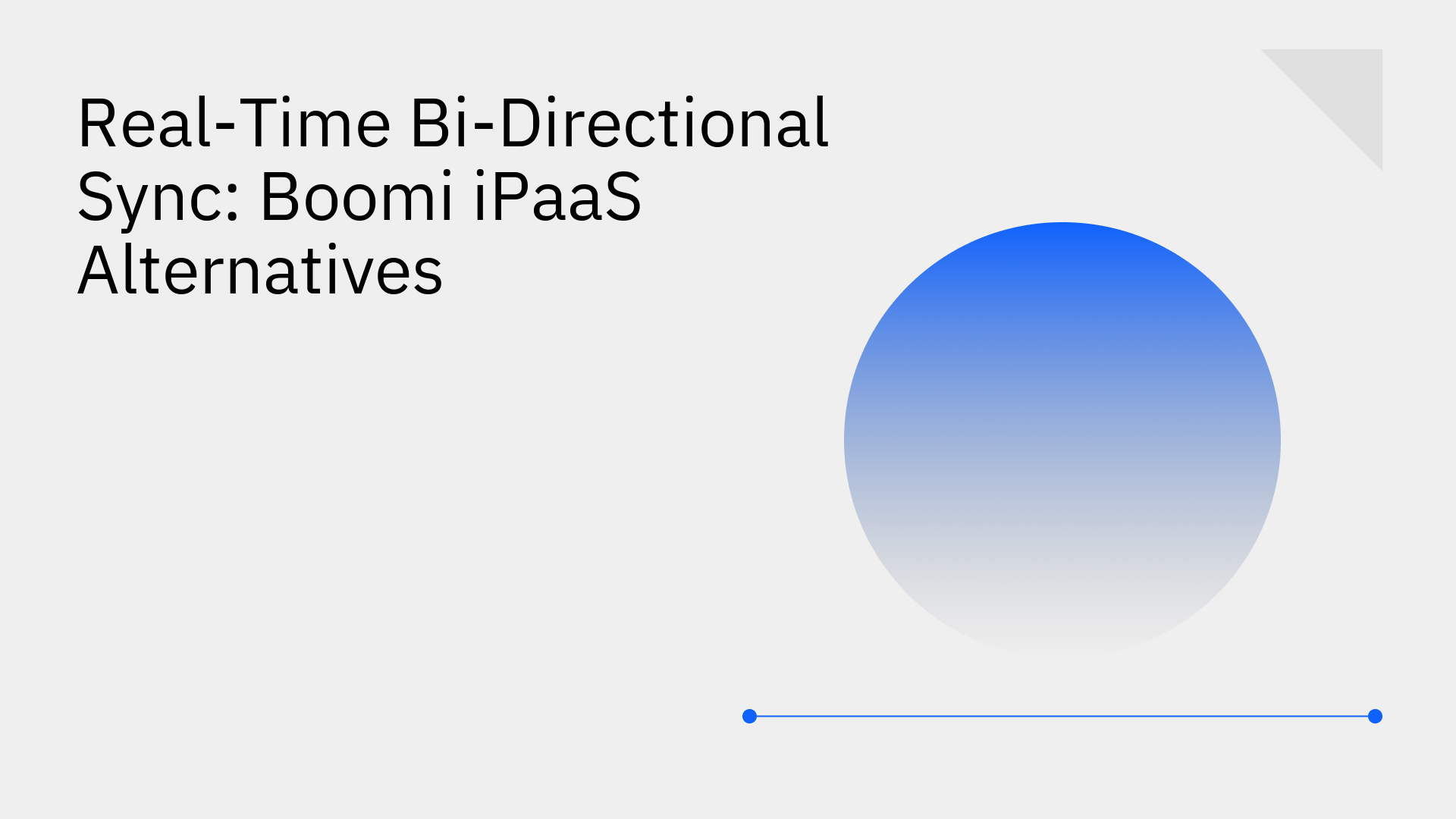
In today's fast-paced digital landscape, maintaining data consistency across a sprawling ecosystem of applications is no longer a luxury, it's a fundamental requirement for operational agility.
When CRM, ERP, and database systems fall out of sync, the consequences are immediate: operational inefficiencies multiply, customer experiences degrade, and business reporting becomes unreliable. To combat these data silos, many organizations turn to an Integration Platform as a Service (iPaaS).
Boomi stands out as a prominent leader in the iPaaS market, but a growing number of businesses are looking for real-time bidirectional sync tools like Boomi that are better suited for their specific needs, especially true real-time performance.
This article will explore the capabilities of traditional iPaaS solutions for bi-directional sync and compare them with modern alternatives engineered specifically for real-time data synchronization. Understanding how to achieve real-time data sync simplified for modern teams is crucial for building a resilient and competitive operation.
An Integration Platform as a Service (iPaaS) is a suite of cloud services that facilitates the development, execution, and governance of integration flows connecting any combination of on-premises and cloud-based applications, services, and data [1]. These platforms are designed to simplify the complex process of creating integration workflows by using pre-built connectors and low-code development environments.
The primary use cases for iPaaS solutions include [2]:
Boomi is a powerful, enterprise-grade iPaaS solution recognized for its comprehensive features and ability to manage complex, large-scale integration projects.
While Boomi can be configured for bi-directional sync, its core architecture often relies on scheduled or trigger-based polling. This means it checks for data changes at predetermined intervals, which inherently introduces latency. For operations that demand instant updates, a delay of even a few minutes can be a significant bottleneck.
Achieving near real-time performance with Boomi is possible, but it often requires complex configurations, custom scripting, and deep platform expertise. This approach can increase both implementation time and total cost of ownership. For teams whose primary need is simple, fast, and reliable bi-directional data synchronization, Boomi's all-in-one feature set can be excessive and cost-prohibitive. It is crucial to compare real-time data sync technologies to understand these architectural tradeoffs.
The iPaaS market is diverse and continues to grow, with many vendors offering specialized solutions to meet different business needs [3]. This section focuses on alternatives that excel at real-time, bi-directional synchronization.
Stacksync is a modern alternative engineered specifically for high-performance, real-time bi-directional data synchronization. Unlike general-purpose iPaaS tools that must cater to a wide range of integration patterns, Stacksync is purpose-built to eliminate data latency by providing sub-second sync speeds.
With its no-code interface, Stacksync allows teams to set up and deploy complex syncs between systems like CRMs (Salesforce, HubSpot), ERPs (NetSuite), and databases (Postgres, Snowflake) in minutes, not months.
Key features include:
As a dedicated data sync and workflow automation platform, Stacksync delivers the reliability and performance that modern operational teams require without the overhead of a generalist iPaaS.
While popular, these platforms are designed with different primary goals, making them less suitable for high-performance bi-directional sync.
When evaluating a synchronization tool, it's essential to focus on the technical features that directly impact operational efficiency and data integrity.
While traditional iPaaS platforms like Boomi are powerful all-in-one solutions, their generalist architecture introduces tradeoffs that can make them a suboptimal choice for businesses that prioritize true real-time, bi-directional data synchronization. Their reliance on polling and broad feature sets can lead to latency and unnecessary complexity for data sync use cases.
Modern, specialized tools like Stacksync are purpose-built to solve the specific challenge of data latency, offering superior speed, reliability, and ease of use. When assessing your needs, consider the primary objective. If the goal is high-performance data consistency across mission-critical systems, a dedicated synchronization tool is the more effective and efficient solution.
Ready to eliminate data latency and empower your teams with consistent, real-time data?
Explore how Stacksync can solve your synchronization challenges.